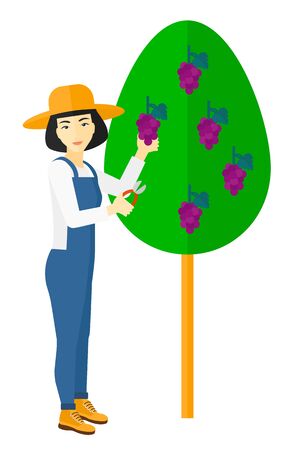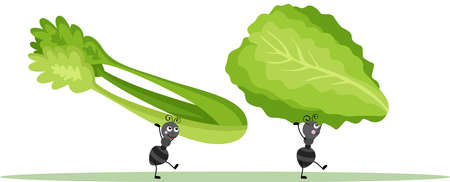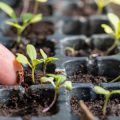1. Choosing the Right Location
If youre just getting started with your backyard vegetable garden, choosing the right location is one of the most important first steps. A great spot can mean the difference between a thriving garden and one that struggles all season long. Here are some key things to consider when picking the best place in your yard:
☀️ Sunlight: The More, the Better
Most vegetables need at least 6 to 8 hours of direct sunlight per day. Leafy greens like lettuce and spinach can tolerate a bit more shade, but sun-loving crops such as tomatoes, peppers, and cucumbers need full sun to grow strong and produce well. Observe your yard throughout the day and note which areas receive consistent sunlight.
Sunlight Needs by Vegetable Type
| Vegetable Type | Sunlight Requirement |
|---|---|
| Leafy Greens (Lettuce, Kale) | 4–6 hours (partial shade OK) |
| Root Vegetables (Carrots, Beets) | 6+ hours |
| Fruit-bearing Plants (Tomatoes, Peppers) | 8+ hours (full sun) |
💧 Drainage: Keep It Well-Drained
A soggy garden bed can lead to root rot and unhealthy plants. Choose a spot where water doesnt collect after it rains. You can test drainage by digging a small hole about 12 inches deep and filling it with water. If it drains within an hour, youre good to go.
🛡️ Protection from Wind and Pests
Your vegetables will thank you for a little shelter from strong winds, which can damage stems or dry out soil quickly. Consider placing your garden near a fence or hedge that offers some wind protection but still allows airflow. To help keep pests out, avoid areas close to compost bins or dense shrubs where critters might hide.
🌱 Easy Access to Water and Tools
You’ll want your garden close enough to a water source for easy watering—especially during hot summer months. Also think about how far you’ll need to carry tools, mulch, or harvested veggies. Convenience goes a long way in keeping your gardening routine enjoyable.
📏 Size Matters
If youre new to gardening, start small! A 4×8 foot raised bed or even a few containers is plenty for beginners. As you gain experience, you can expand your garden area based on what works best in your backyard space.
Quick Checklist for Your Garden Spot
- ✅ Gets at least 6–8 hours of sunlight daily
- ✅ Has well-draining soil or raised beds
- ✅ Sheltered from strong winds and heavy pest zones
- ✅ Close to a water source and toolshed
- ✅ Easy access for planting, weeding, and harvesting
Selecting the right location sets the foundation for a productive backyard vegetable garden. Once youve found your ideal spot, youre ready to move on to preparing the soil and planning what to plant!
2. Planning Your Garden Layout
Before you start digging or planting, its important to plan your vegetable garden layout. A well-thought-out design will help you make the most of your backyard space and ensure that your plants grow healthy and strong. Whether youre working with a small urban yard or a spacious suburban lot, this step sets the foundation for a successful garden.
Raised Beds vs. In-Ground Plots
One of the first decisions youll need to make is whether to use raised beds or plant directly into the ground. Each option has its pros and cons:
| Type | Pros | Cons |
|---|---|---|
| Raised Beds | – Better soil control – Easier on your back – Good drainage – Warms up faster in spring |
– Higher initial cost – Requires materials – May dry out quicker in hot climates |
| In-Ground Plots | – Lower cost – Natural drainage – Can handle larger crops |
– More labor-intensive – May have poor soil quality – Harder to control weeds |
Selecting the Right Spot
Your garden should get at least 6–8 hours of direct sunlight each day. Choose a location with good drainage, easy access to water, and protection from strong winds. If possible, avoid low spots where water tends to pool after rain.
Designing for Space Efficiency
No matter how big or small your yard is, using space efficiently is key. Here are some tips:
- Use vertical space: Grow climbing plants like cucumbers, peas, and beans on trellises.
- Sow in blocks instead of rows: This maximizes growing area and reduces weeds.
- Plan walkways: Leave enough space between beds (at least 18–24 inches) so you can move around easily without stepping on your soil.
The Basics of Companion Planting
Companion planting means growing certain vegetables together that help each other thrive. Some plants improve growth, deter pests, or enhance flavor when paired correctly. Heres a simple guide:
| Main Crop | Good Companions | Avoid Planting With |
|---|---|---|
| Tomatoes | Basil, Carrots, Onions | Corn, Potatoes |
| Cucumbers | Dill, Radishes, Beans | Sage, Potatoes |
| Lettuce | Carrots, Cucumbers, Strawberries | Cabbage family plants (broccoli, kale) |
| Carrots | Lettuce, Tomatoes, Peas | Dill (can stunt growth) |
| Corn | Pumpkins, Beans, Peas | Tomatoes (compete for nutrients) |
Create a Simple Sketch or Diagram
You don’t need fancy software—just grab a pencil and paper. Draw your garden area to scale and sketch out where each bed or row will go. Make sure to label what youll plant where so that you can rotate crops next year for better soil health.
A Few Final Tips for Layout Success:
- Avoid overcrowding—plants need room to breathe and grow.
- Keeps taller plants on the north side so they don’t shade shorter ones.
- If you’re new to gardening, start small—you can always expand later!
A thoughtful layout makes all the difference in how enjoyable and productive your backyard vegetable garden will be. Take time now to plan it right—you’ll thank yourself come harvest season!

3. Selecting Vegetables That Suit Your Climate
One of the most important steps in starting a successful backyard vegetable garden is choosing vegetables that will thrive in your local climate. The United States is home to a wide range of climates, from the cold winters of the Northeast to the hot summers of the Southwest. That’s where USDA Hardiness Zones come into play.
Understanding USDA Hardiness Zones
The USDA Hardiness Zone Map divides North America into 13 zones based on average annual minimum winter temperatures. Each zone is 10°F warmer (or colder) than the adjacent one. Knowing your zone helps you determine which vegetables are most likely to succeed in your area.
Find Your Zone
You can find your USDA Hardiness Zone by visiting the USDA website or checking a gardening app. Once you know your zone, you can start planning your garden with confidence.
Recommended Vegetables by Region and Season
Here’s a handy guide to help you choose vegetables based on different U.S. regions and growing seasons:
| Region | USDA Zones | Spring/Summer Crops | Fall/Winter Crops |
|---|---|---|---|
| Northeast (e.g., NY, MA) | 3-6 | Lettuce, Tomatoes, Peas, Carrots | Kale, Spinach, Garlic, Turnips |
| Southeast (e.g., FL, GA) | 7-10 | Okra, Peppers, Eggplant, Sweet Potatoes | Collards, Broccoli, Cabbage, Radishes |
| Midwest (e.g., IL, OH) | 4-6 | Corn, Beans, Zucchini, Cucumbers | Brussels Sprouts, Beets, Kale, Onions |
| Southwest (e.g., AZ, NM) | 5-9 | Chili Peppers, Melons, Squash, Corn | Lettuce, Peas, Carrots, Spinach |
| West Coast (e.g., CA, OR) | 6-10 | Tomatoes, Basil, Beans, Peppers | Kale, Broccoli, Cauliflower, Garlic |
| Pacific Northwest (e.g., WA) | 6-8 | Lettuce, Cabbage, Peas, Potatoes | Kale, Leeks, Chard, Parsnips |
Tips for Choosing the Right Vegetables
Check Seed Packet Information
The back of seed packets often includes information about ideal planting times and temperature ranges. This helps you match crops with your climate and season.
Select Varieties Adapted to Your Area
Look for region-specific varieties at local nurseries or extension offices. These are often bred for better performance in your specific zone.
Start Small and Experiment
If youre just getting started with backyard gardening, pick a few easy-to-grow veggies like lettuce or radishes. See what works well in your yard before expanding.
The Role of Microclimates in Your Garden
Your backyard may have its own microclimates—small areas that differ slightly from the general climate due to things like sun exposure or wind protection. For example:
- A south-facing wall may stay warmer and be great for heat-loving plants like tomatoes.
- A shaded corner might be perfect for leafy greens during hot summer months.
By understanding both your USDA zone and your yard’s unique conditions, you’ll be better equipped to grow a healthy and productive vegetable garden.
4. Preparing the Soil and Composting
Before you plant your first seed, it’s essential to prepare your garden soil to give your vegetables the best chance to grow strong and healthy. Good soil is the foundation of a successful backyard vegetable garden. Here’s how to get started with soil preparation and composting in your U.S. home garden.
Test Your Soil
The first step in preparing your garden is testing your soil. You can buy an at-home soil test kit from most garden centers or send a sample to your local cooperative extension office for more detailed results. These tests will tell you important things like pH levels and nutrient content.
Ideal Soil pH for Vegetables
| Vegetable Type | Preferred pH Range |
|---|---|
| Leafy Greens (lettuce, spinach) | 6.0 – 7.0 |
| Root Vegetables (carrots, beets) | 6.0 – 6.8 |
| Fruit Vegetables (tomatoes, peppers) | 6.2 – 6.8 |
Add Compost for Nutrients
Compost is one of the best natural ways to boost your soils fertility. It improves texture, adds nutrients, and helps retain moisture. You can make compost at home using kitchen scraps like fruit peels, coffee grounds, eggshells, and yard waste such as leaves and grass clippings.
What to Compost vs What to Avoid
| Good for Compost | Avoid Adding |
|---|---|
| Vegetable scraps | Meat or dairy products |
| Coffee grounds and filters | Greasy or oily foods |
| Eggshells | Synthetic chemicals or pet waste |
Use Organic Amendments
If your soil test shows deficiencies, consider adding organic amendments such as bone meal for phosphorus, blood meal for nitrogen, or wood ash for potassium. These natural boosters help balance your soil without harmful chemicals.
Common Organic Soil Amendments and Their Benefits
| Amendment | Main Benefit |
|---|---|
| Compost | Overall soil health and nutrient balance |
| Bone Meal | Adds phosphorus for root development |
| Blood Meal | Adds nitrogen for leafy growth |
| Lime | Raises pH level if soil is too acidic |
Till and Loosen the Soil
Once youve added compost and any needed amendments, loosen up the top 8–12 inches of soil using a shovel or garden fork. This improves drainage and allows roots to spread easily.
Aim for Rich, Well-Draining Soil Texture
The ideal garden soil should feel crumbly but hold together when squeezed—this means its well-aerated and has the right amount of organic matter. If your soil is too sandy or too clay-heavy, mix in organic material to improve its structure.
A little time spent on preparing your soil will pay off big when its harvest time!
5. Planting, Watering, and Maintenance
Once your garden beds are ready and youve chosen your vegetables, its time to get planting! Whether youre starting from seeds or using transplants, giving your plants the right start is key to a healthy, productive garden.
Seeding vs. Transplanting
Some vegetables do best when sown directly into the soil, while others thrive when started indoors and transplanted later. Heres a quick guide:
| Vegetable | Direct Sow | Transplant |
|---|---|---|
| Carrots | ✔️ | |
| Lettuce | ✔️ | ✔️ |
| Tomatoes | ✔️ | |
| Cucumbers | ✔️ (after frost) | ✔️ |
| Zucchini | ✔️ |
If you live in a region with a shorter growing season (like the northern U.S.), starting seeds indoors can help extend your harvest window.
Create a Watering Schedule
Your vegetables need consistent moisture to grow well. Most gardens require about 1 inch of water per week, either from rainfall or supplemental watering. Here are some tips:
- Mornings are best: Water early in the day to reduce evaporation and prevent fungal diseases.
- Avoid overhead watering: Use soaker hoses or drip irrigation to target the roots and keep leaves dry.
- Check soil moisture: Stick your finger into the soil; if it feels dry an inch down, it’s time to water.
The Power of Mulching
Add mulch around your vegetable plants to help retain soil moisture, regulate temperature, and reduce weeds. Great organic mulches include:
- Sawdust or wood chips (aged)
- Dried grass clippings (untreated)
- Pine needles or shredded leaves
- Sugarcane mulch or straw (seed-free)
A 2–3 inch layer is usually enough. Just keep it a few inches away from plant stems to avoid rot.
Tackling Weeds and Pests Naturally
No one likes dealing with weeds or bugs, but there are eco-friendly ways to manage them without harsh chemicals:
Pest Control Tips:
- Diatomaceous earth: A natural powder that deters soft-bodied insects like slugs and aphids.
- Nematodes: Microscopic organisms that control soil-dwelling pests like grubs.
- Naturally repellent plants: Marigolds repel nematodes; basil can deter flies and mosquitoes.
Nontoxic Weed Management:
- Corn gluten meal: Prevents weed seed germination when applied early in the season.
- Burlap or landscape fabric: Blocks sunlight from reaching weed seeds while still allowing water through.
A little effort goes a long way when it comes to maintaining your backyard vegetable garden. Staying consistent with these practices will help your veggies thrive all season long!
6. Harvesting and Seasonal Care
Knowing when and how to harvest your vegetables is key to getting the best flavor and nutrition from your garden. Each vegetable has its own signs of ripeness, and harvesting at the right time helps encourage more production in some plants.
When to Harvest Common Vegetables
| Vegetable | Harvest Time | Tips |
|---|---|---|
| Tomatoes | When fully colored (red, yellow, etc.) and slightly soft | Pick regularly to encourage more fruit |
| Zucchini | 6–8 inches long | Larger ones get tough and seedy |
| Lettuce | Before it bolts (produces a flower stalk) | Harvest outer leaves or cut whole head |
| Carrots | About 1/2 to 1 inch in diameter | Loosen soil before pulling to avoid breaking them |
| Peppers | Green or fully colored, depending on variety | Use scissors or pruning shears to avoid damaging the plant |
How to Harvest Properly
- Use clean, sharp tools like garden scissors or pruners.
- Avoid pulling or twisting vegetables off the plant, which can cause damage.
- Harvest early in the morning for peak freshness, especially leafy greens.
- Check your garden daily during peak season—many crops grow quickly!
Fall Clean-Up Tips
After harvesting is done for the season, its important to clean up your garden beds:
- Remove dead plants, weeds, and fallen fruits to prevent pests and disease.
- Add healthy plant material to your compost pile if its not diseased.
- Till or turn over the soil lightly to break up compacted areas.
- Add mulch or cover crops (like clover or winter rye) to protect soil over winter.
Crop Rotation Basics
Certain vegetable families deplete specific nutrients from the soil. Rotating crops each year helps keep your soil healthy and reduces pest problems. Here’s a simple rotation plan:
| Year | Bed A | Bed B | Bed C |
|---|---|---|---|
| 1st Year | Leafy Greens (Lettuce, Spinach) | Fruiting Crops (Tomatoes, Peppers) | Root Crops (Carrots, Beets) |
| 2nd Year | Root Crops | Leafy Greens | Fruiting Crops |
| 3rd Year | Fruiting Crops | Root Crops | Leafy Greens |
Preparing for Next Season
- Add compost or well-rotted manure to enrich your soil before winter.
- Test your soil pH and nutrient levels if possible—kits are available at most garden centers.
- Create a garden journal to record what worked well and what you’d like to change next year.
- If using raised beds, check for any repairs needed before next spring.
A little effort at the end of the season goes a long way in setting yourself up for success next year. Keeping your garden tidy and planning ahead ensures healthier plants and a better harvest!


